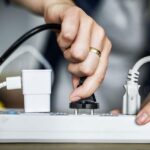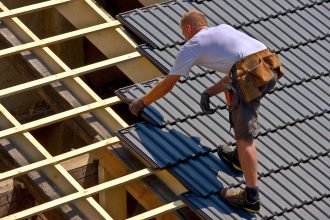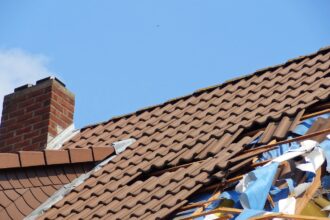Water damage is a common problem that homeowners face, and it can be caused by various reasons such as natural disasters, plumbing issues, or even small leaks. Regardless of the cause, water damage can lead to significant problems if not addressed promptly. In this guide, we will discuss what you should do when water damage strikes your home. We will cover the steps you need to take immediately after the damage occurs, as well as long-term solutions to prevent future water damage.
Assess the extent of the damage
The first step in dealing with water damage is to assess the extent of the damage. Take note of which areas and belongings have been affected by the water. Consider calling a professional water restoration company to assist you in this process, as they have the expertise and equipment to properly evaluate the damage. This will help you understand the severity of the situation and determine what needs to be done next. Taking photos or videos of the damage can serve as evidence for insurance claims and future repairs.
Turn off the water source and electricity
If the water damage is caused by a burst pipe or appliance leak, locate the main shut-off valve and turn it off immediately. In cases of natural disasters or severe flooding, contact your utility company to turn off the electricity to your home. Do not attempt to handle any electrical appliances or outlets in the affected area until the power has been turned off. This is important for your safety and to prevent further damage.
Call for professional assistance
While you can start the cleanup process on your own, it is highly recommended to call for professional assistance. Water damage restoration companies have the necessary equipment and expertise to handle the situation effectively. They can also help with insurance claims and provide long-term solutions to prevent future water damage. Make sure to choose a reputable company with proper certification and experience in dealing with water damage.
Begin water removal and drying process
After assessing the damage and calling for professional assistance, the next step is to begin the water removal and drying process. The longer water sits in your home, the more damage it can cause. Therefore, start removing any standing water as soon as possible. You can use a wet/dry vacuum or call for professional-grade equipment to extract the water. Once the majority of the water is removed, thoroughly dry out the affected area. Use fans and dehumidifiers to circulate air and reduce moisture levels. This will prevent mold growth and further damage to your home’s structure and belongings.
Sanitize affected areas to prevent mold growth
Mold can start growing within 24-48 hours in areas that are damp and humid, making it crucial to sanitize affected areas as soon as possible. This includes disinfecting surfaces and items that have been in contact with the water, such as furniture and carpets. Using a mixture of bleach and water or a commercial disinfectant can effectively kill any mold spores and prevent further growth. Wear protective gear such as gloves and masks while sanitizing, as mold can be harmful if inhaled or ingested.
Repair or replace damaged items
After the water has been removed and the affected areas have been sanitized, it is time to inspect your belongings and assess what can be repaired or replaced. Note that not all items can be salvaged after water damage, especially if they have been submerged in contaminated water. Porous materials such as carpets, drywall, and insulation may need to be replaced to prevent mold growth. However, non-porous items such as furniture and appliances can often be repaired if the damage is not too severe. Consult with professionals on what can be salvaged and what needs to be replaced.
Take preventative measures for future water damage
After encountering water damage, take steps to prevent future incidents. Regularly maintain your plumbing system by checking for wear, corrosion, or leaks in pipes and fixtures. Installing a sump pump or backflow valve can help manage excess water. Keep gutters and downspouts clean to avoid overflow. Address small leaks or issues promptly, such as replacing seals, fixing dripping faucets, or repairing minor cracks. Immediate action can save you from costly repairs. Consider flood insurance if you live in a disaster-prone area for financial protection. Regularly review and update your insurance policy to cover potential risks.
Water damage can be a stressful and overwhelming situation for homeowners. However, by following these steps and seeking professional assistance, you can effectively mitigate the damage and prevent future incidents. Prioritize your safety and take immediate action to minimize the extent of the damage. With proper precautions, you can protect your home from water damage and ensure its longevity.












